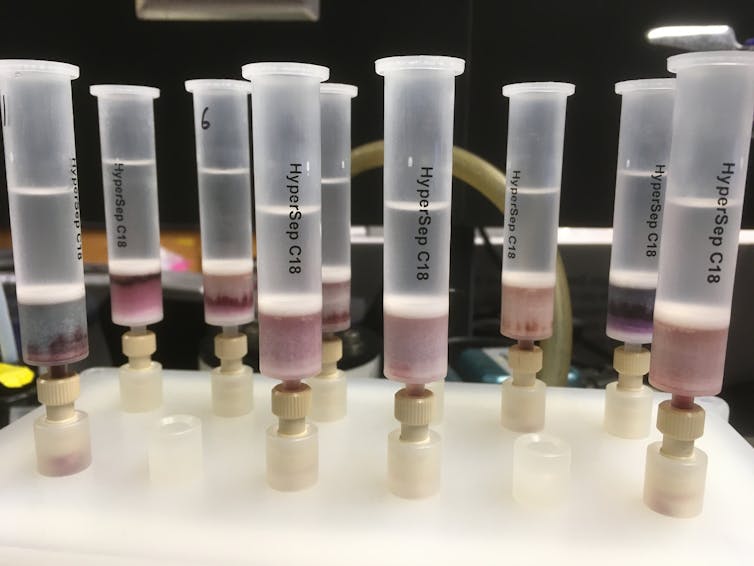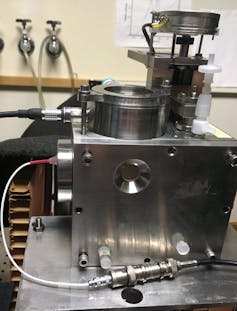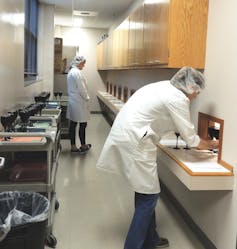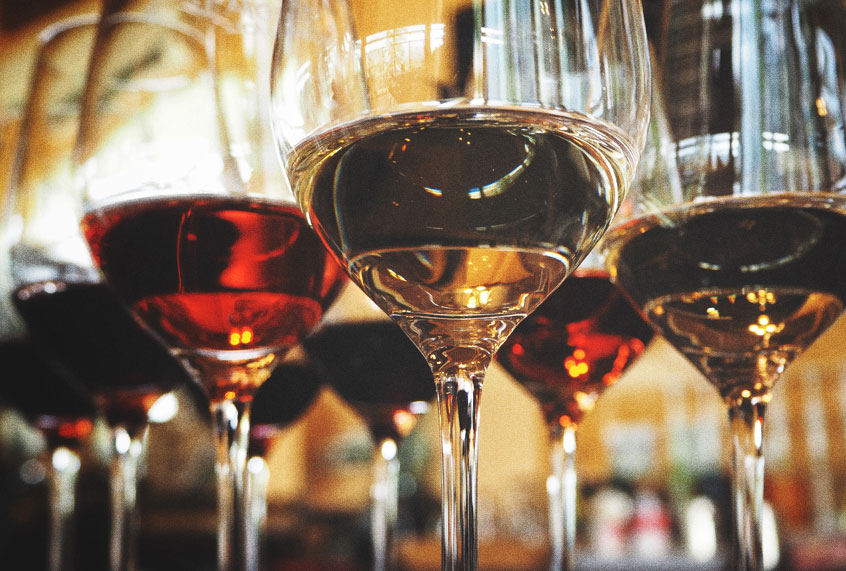When you take a sip of wine at a family meal or celebration, what do you notice?
First, you probably note the visual characteristics: the color is generally red, rosé or white. Next, you smell the aromatic compounds wafting up from your glass.
And then there’s the sensation in your mouth when you taste it. White wine and rosé are usually described as refreshing, because they have brisk acidity and little to moderate sweetness. Those low levels of sugar may lead you to perceive these wines as “dry.”
People also describe wines as dry when alcohol levels are high, usually over about 13%, mostly because the ethanol leads to hot or burning sensations that cover up other sensations, especially sweetness. People also perceive red wines as dry or astringent because they contain a class of molecules called polyphenols.
As an enologist – a wine scientist – I’m interested in how all the chemistry in a glass of wine adds up to this perception of dryness. People are good at evaluating a wine’s dryness with their senses. Can we eventually come up with a way to automatically assess this dryness or astringency without relying on human tasters?
The chemistry at the vineyard
Everything starts with the grapes. If you taste a mature grape skin or seed at harvest, it will seem dry or astringent to you, thanks to a number of chemical compounds it contains.
Large molecules called condensed tannins are mostly responsible for the astringency perception. These compounds are made up of varying types and numbers of smaller chemical units called flavanols. Tannins are in the same family of molecules, the polyphenols, that give grapes their red or black color. They tend to be larger in grape skins than in grape seeds, and consequently the skins tend to be more astringent, while the seeds are more bitter.
Grape varieties differ in how much of each of these compounds they contain. In Vitis vinifera cultivars, like Pinot noir and Cabernet sauvignon, the tannin concentration varies from a relatively high 1 to 1.5 mg/berry. In cold-hardy hybrid grapes found in the Midwestern United States, like Frontenac and Marquette, the concentrations are much lower, ranging from 0.3 to 0.7 mg/berry.
Factors in the vineyard – including site, soil qualities and amount of sun – affect the final concentration of tannins in the fruit.

Aude Watrelot, CC BY-ND
The chemistry in your mouth
Basically, the more tannin there is in a wine, the more astringent it will be.
When you take a sip, the large tannin molecules interact with proteins from your saliva. They combine and form complexes, reducing the number of salivary proteins available to help lubricate your mouth. It leaves your mouth with a dry sensation – like if a snail were to lose its mucus layer, it would dry out.
Because everyone has a different composition and concentration of saliva proteins, and because the flow rate of saliva as you bring wine into your mouth varies, your perceptions of an astringent or dry wine won’t be the same as those of your friends or family. The alcohol level, pH and aroma of the wine also influence how intensely and for how long you perceive a red wine’s dryness.
Since wine dryness is a perception, the most appropriate tool to appraise it is sensory evaluation. It requires panelists trained on the wine aroma, taste and mouthfeel based on prepared standards and other wines.
But winemakers would love to have a quick, simple way to objectively measure astringency without relying on human tasters. That way, they could easily compare this year’s wine to last year’s, or to another wine that is not available to be tested.
Can we scientifically evaluate dryness?

Aude Watrelot, CC BY-ND
The challenge for me and my colleagues was to see if we could match up the quantified chemical and physical properties in a wine to the trained panelists’ perceptions.
First, we used analytical methods to figure out the different sizes of tannins present in particular wines, and their concentrations. We investigated how these tannins interacted and formed complexes with standard salivary proteins.
My collaborators and I also used a physical approach, relying on a piece of equipment with two surfaces that are able to mimic and measure the forces of friction that occur in a drinker’s mouth between the tongue and the palate as wine and saliva interact. The friction forces increase between drier surfaces and decrease between more lubricated surfaces.

Aude Watrelot
Then, we trained human panelists to evaluate the intensity of dryness in the same wines and in a wine containing no tannins.
People perceived the wine containing the higher concentration of larger tannins as drier for a longer time than the wine without tannins. That made sense based on what we already knew about these compounds and how people sense them.
We were surprised, though, by our physical measurements in the lab, because they provided the opposite result as our human tasters’ perception. In the presence of too large or too many tannins in the wine, we recorded lower friction forces than in wines low in tannins. Based on the mechanical surfaces test, it seemed like there would be less dry mouthfeel than we’d expect in high-tannin wines.
My colleagues and I are planning to investigate this unexpected result in future research to improve our understanding of the dryness perception.
All its chemical and physical variables are part of what makes drinking wine a richly personal and ever-changing experience. Considering the impact of astringency on how individuals perceive a particular wine, a quick measure could be very helpful to winemakers as they do their work. So far, we haven’t been able to create a simple scale that will tell a winemaker that tannins at one certain level match up with a very particular dryness perception. But we enologists are still trying.
Aude Watrelot, Assistant Professor of Enology, Iowa State University
This article is republished from The Conversation under a Creative Commons license.

